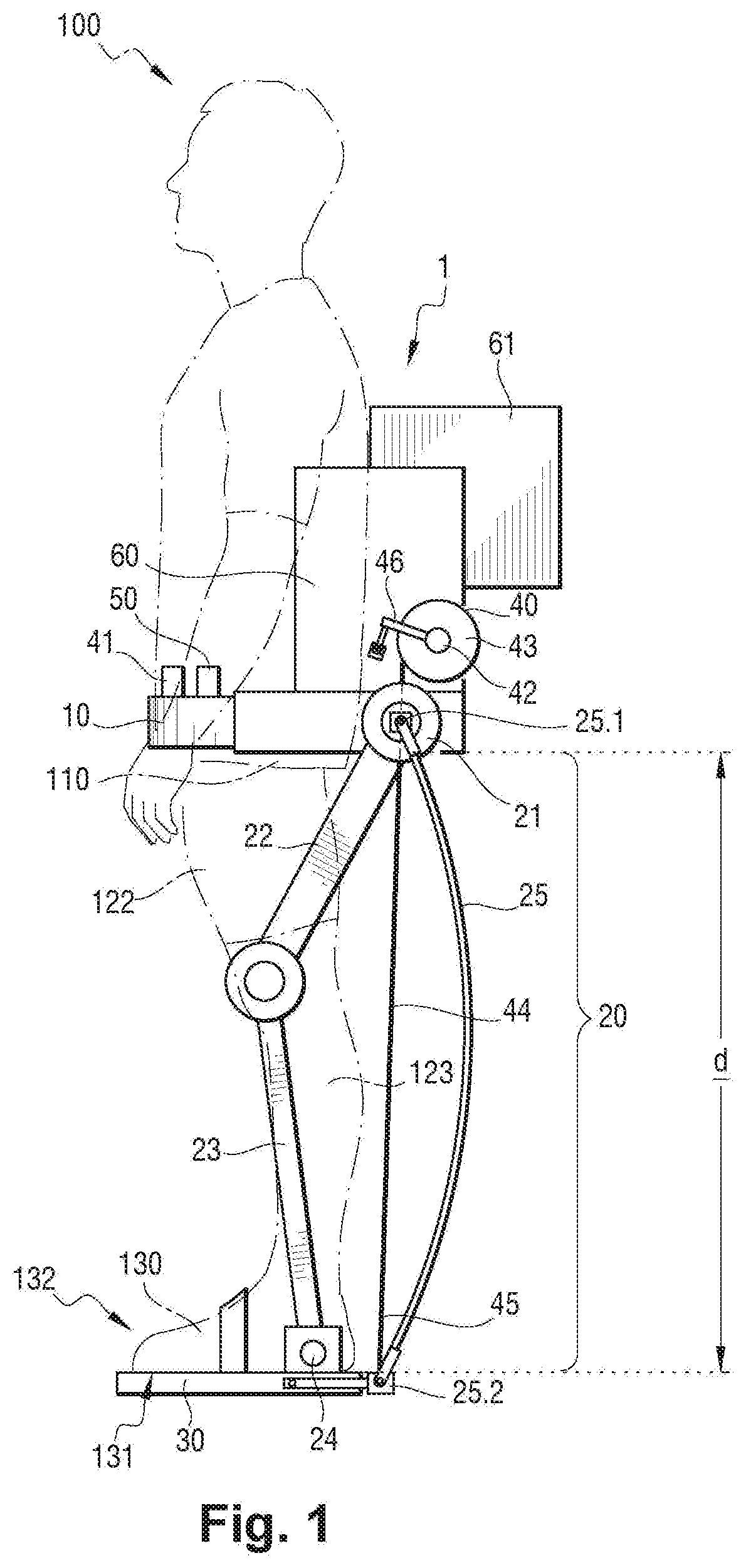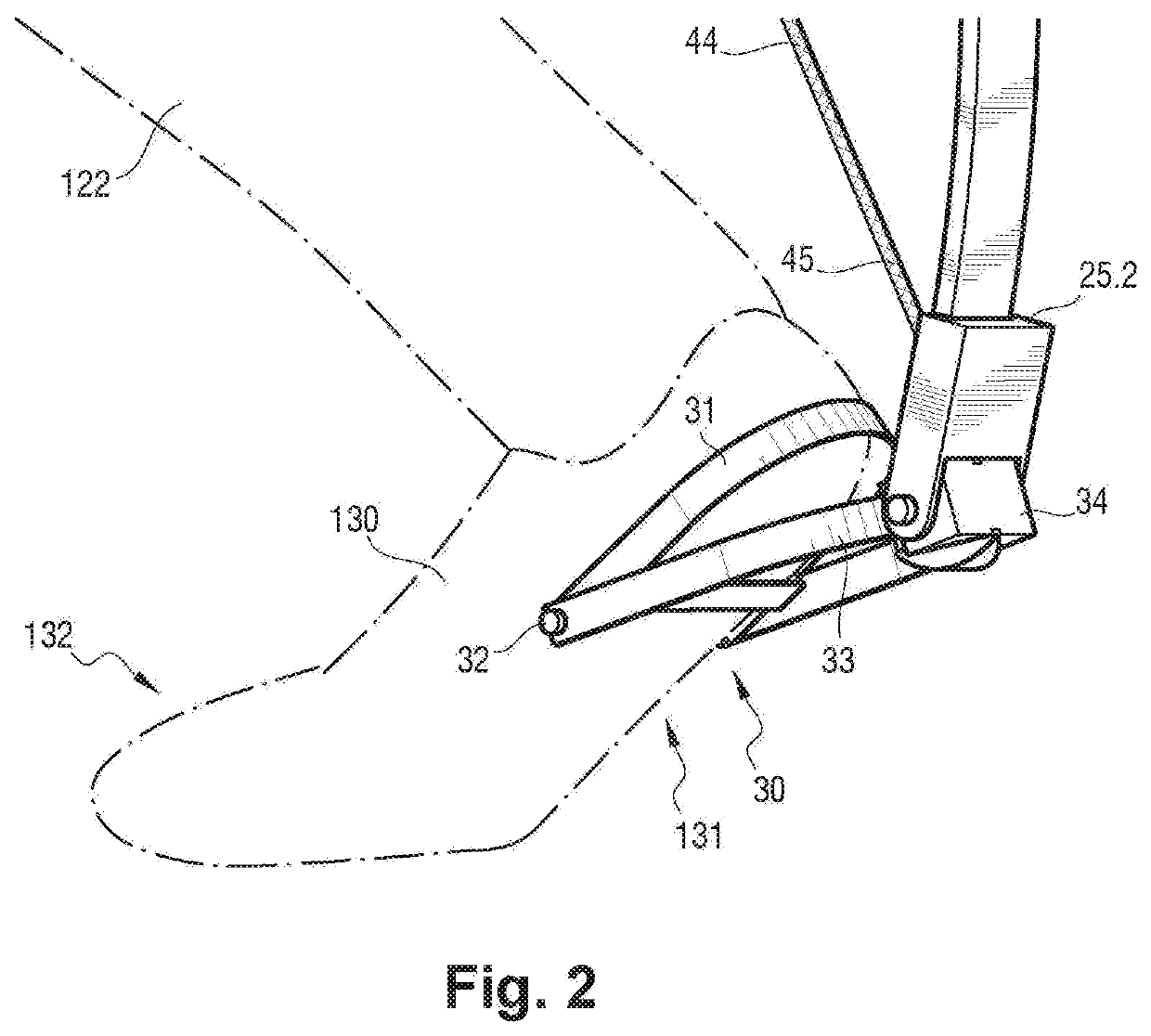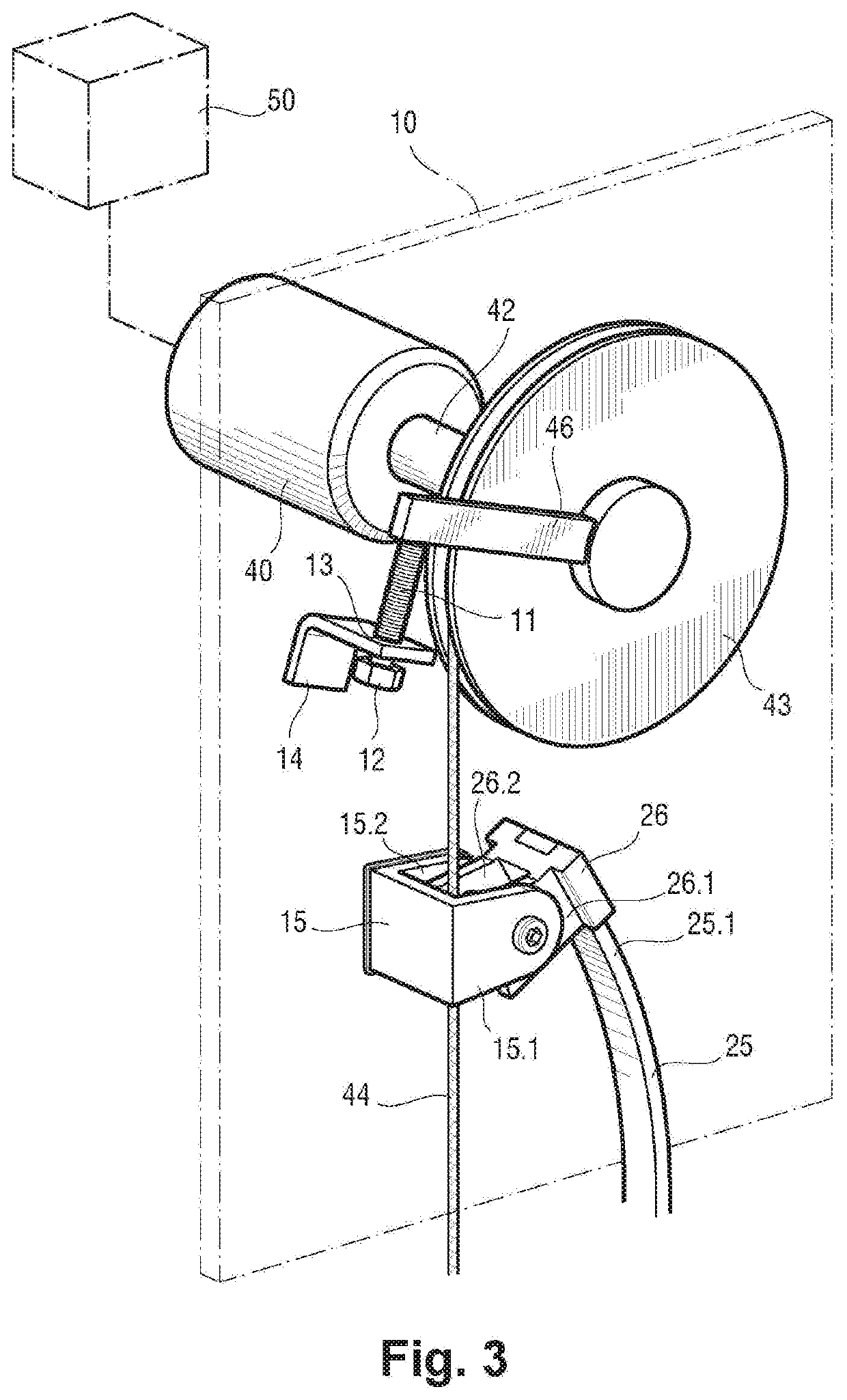Lower limb of an exoskeleton with low power consumption
a technology of exoskeleton and lower limb, which is applied in the field of lower limbs of ambulatory exoskeleton, can solve the problems of consuming a lot of power, weighing on the user, and the entire mass of the exoskeleton, so as to reduce the power consumption of an ambulatory exoskeleton and increase safety
- Summary
- Abstract
- Description
- Claims
- Application Information
AI Technical Summary
Benefits of technology
Problems solved by technology
Method used
Image
Examples
second embodiment
[0036]With reference to FIG. 4 and according to the invention, the foot segment 30 comprises a highly sensitive linear potentiometric sensor on the foot segment 30 of the exoskeleton 1 and connected to the unit 50.
[0037]This sensor 62 measures the distance that separates the first element 31 from the second element 32 of foot segment 30. From this distance it is possible to deduce the attitude (angular position and length) of the leg 122, hence the distance separating the pelvis segment 10 from the foot segment 30. The intention of the user 100 to leave the stance phase in order to walk is detected when the sensor 62 measures a movement. This measurement is transmitted to the unit 50, which then controls the geared motor 40.
[0038]This sensor 62 can also be composed of strain gauges in such a way as to measure the strain between the foot 30 and the ankle 25.2 (the distance d is then controlled on the basis of the strain measured, with a zero setpoint or with a slight offset).
third embodiment
[0039]With reference to FIG. 5 and according to the invention, the pelvis segment 10 comprises a ball-type slideway 70 oriented substantially vertically when the exoskeleton 1 rests on a horizontal ground surface. A first carriage 71 is mounted freely, or with a weight compensation spring, to slide on the slideway 70. The first carriage 71 carries the interface 60, to which the load 61 is connected, and also the geared motor 40, the pulley 43, its stop 46, the screw 12 and the bracket 14. Other elements of the pelvis segment 10 can also be carried by the first carriage 71, for example the command and control unit 50 and / or the electric accumulators 41.
[0040]The functioning of the exoskeleton 1 is identical to what has been described above. The set-up of the geared motor 40 and of the interface 60 for carrying the load 61 permits a free flexion travel of the legs (making it possible, for example, to crouch down) free, during which it is not necessary to adjust the geared motor 40, wh...
fourth embodiment
[0042]With reference to FIGS. 6 and 7 and according to the invention, the pelvis segment 10 comprises a ball-type slideway 73 oriented substantially vertically when the exoskeleton rests on a horizontal ground surface. A second carriage 74 is mounted to slide on the slideway 73. An electric actuator 75, connected electrically to the unit 50, extends between the pelvis segment 10 and the second carriage 74 in such a way that a retraction of the actuator 75 causes a translation of the second carriage 74, which moves the latter away from the first end 21 of the leg segment 20, which end 21 is articulated on the pelvis segment 10. As can be seen in FIG. 6, the first end 45 of the cable 44 is connected to the second end 25.2 of the leaf spring 25 and, as can be seen in FIG. 7, the second end 46 of the cable 44 is coupled to the pelvis segment 10, here to a point of the slideway 73. The second carriage 74 carries an idler pulley 76 about which the cable 44 winds. Thus, a movement of the s...
PUM
 Login to View More
Login to View More Abstract
Description
Claims
Application Information
 Login to View More
Login to View More - R&D
- Intellectual Property
- Life Sciences
- Materials
- Tech Scout
- Unparalleled Data Quality
- Higher Quality Content
- 60% Fewer Hallucinations
Browse by: Latest US Patents, China's latest patents, Technical Efficacy Thesaurus, Application Domain, Technology Topic, Popular Technical Reports.
© 2025 PatSnap. All rights reserved.Legal|Privacy policy|Modern Slavery Act Transparency Statement|Sitemap|About US| Contact US: help@patsnap.com



